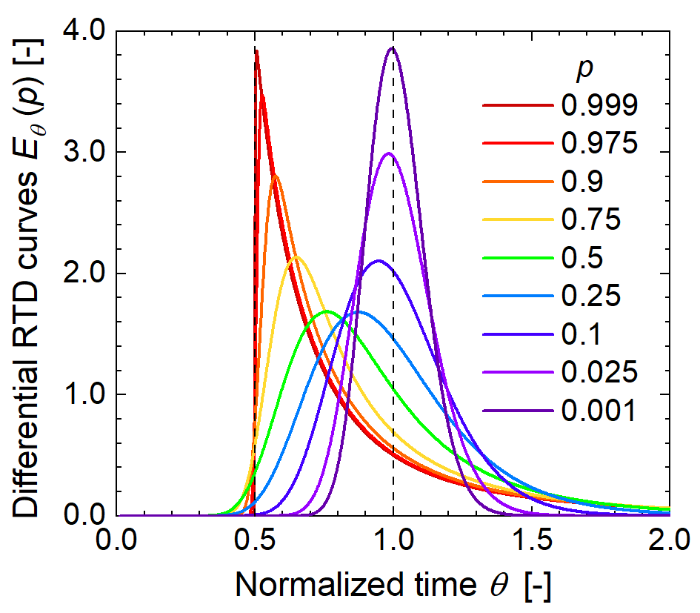Residence time distribution models for flow chemistry
In laminar flow chemistry, tubular reactors are often operated in the transition regime were neither the axial dispersion model nor the pure convection model are valid. This paper presents for solute transport under Poiseuille flow models for the residence time distribution (RTD) in the transition regime missing previously. A novel approach uses an assumed outlet concentration field to calculate the RTD fully analytically via the mixing cup average concentration and its moments. The proposed mechanistic transition regime model (MTR model) depends on the time scale ratio of transversal diffusion and space time as sole parameter, is predictive for straight tubes and recovers the pure convection and axial dispersion models in the limits. In addition, a simplified compartment model based on a plug flow reactor followed by tanks-in-series is proposed (dTiS model). In combination with a correlation for a dispersion reduction factor, both models are predictive for coiled tubes and can be used for reaction engineering design. They are also useful to predict or characterize RTDs in other applications, as demonstrated for a pneumatic flotation cell.
Contact: Dr. Martin Wörner
Reference: M. Wörner, Dispersion and residence time distribution of laminar tubular flow in the transition regime – models for flow chemistry and beyond, Chemical Engineering Science 318 (2025) 122116, https://doi.org/10.1016/j.ces.2025.122116

